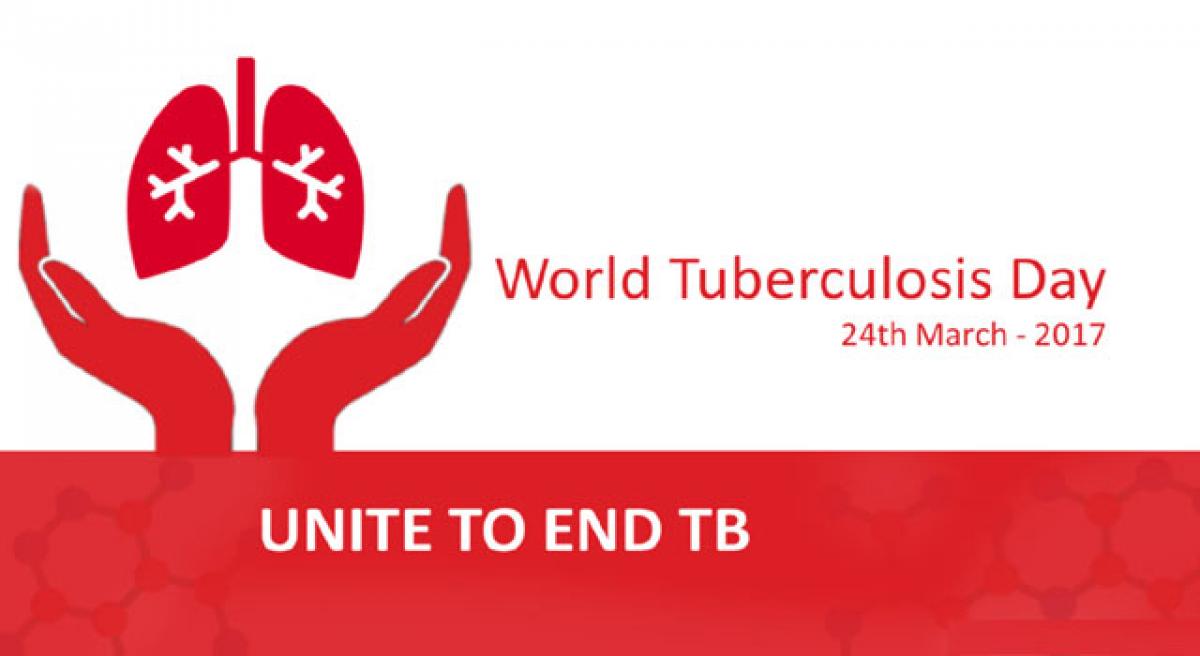Live
- Celebration of India’s cultural heritage, collective spirit: PM Modi on Maha Kumbh
- CCI issues cease and desist order against Table Tennis Federation of India, affiliate bodies
- Sensex closes at 82,133 after 2,000 pts rally from day low
- SMAT: Rahane’s stellar 98 leads Mumbai to final
- PKL 11: 'No one can predict who will reach the playoffs,’ says UP Yoddhas coach
- Nobody praises Kejriwal's ten-year tenure: Sandeep Dikshit
- MacBook Air M3 Hits Lowest Price in India: Find Details
- High Court Adjourns Hearing on Allu Arjun's Petition to 4 PM
- Pawan Kalyan praises Chandrababu Naidu at Swarnandhra Vision 2047 document launch
- Chirec International looks to transform education with Chirec 2.0 vision
Just In

One look at Puni Garasia, 14, was all it took Ashok Dave, a doctor operating a charitable mobile clinic service for 56 dusty, desolate hamlets in Sirohi, southwest Rajasthan, to suspect tuberculosis (TB). \"She was all skin and bones,\" Dave, an employee of Global Hospital & Research Centre, said.
One look at Puni Garasia, 14, was all it took Ashok Dave, a doctor operating a charitable mobile clinic service for 56 dusty, desolate hamlets in Sirohi, southwest Rajasthan, to suspect tuberculosis (TB). "She was all skin and bones," Dave, an employee of Global Hospital & Research Centre, said.
Low weight is a classic symptom of TB, a disease associated with wasting away of fat and muscle. Under-nutrition increases the severity of TB, reduces patients' speed of recovery, and increases their chances of suffering side effects from the medicine, and the likelihood of their becoming one of the 480,000 Indian lives that TB, an infectious airborne disease, claims every year.
When Puni, a tribal from Bhaisasingh village in Sirohi district, came into the mobile clinic, she weighed 20 kg, and had a Body Mass Index (BMI) of 9.9 kg/m2, a level that is "incompatible with life," said Anurag Bhargava, professor in the Department of Medicine, Yenepoya Medical College, Mangalore, who coordinated with nutritional experts in drafting the new guidelines.
The desirable BMI level is 18.5 kg/m2, the ideal 21 kg/m2. A sputum test confirmed that her body-racked by fever and a persistent cough, other classic symptoms of TB-was indeed being consumed by mycobacterium tuberculosis.
Over the six months following the diagnosis, Jayantilal, a health worker living and working in Puni's village, personally dispensed every dose of the prescribed TB medicines freely available under the Indian government's Revised National TB Control Programme (RNTCP), and doled out six kilograms each of roasted soy bean and gram, under a nutrition-support initiative for TB patients by the same charity that Dave works for.
Prior to the development of anti-TB drugs in the middle of the 20th century, good food, open air, a dry climate and rest constituted the main treatment for TB, and those who could afford it would retreat to sanatoriums. With the advent of chemotherapy, the government's focus turned to the mass delivery of medicine a necessity as India then had 23,000 TB beds for 1.5 million patients. In this switch, the new policy ignored the role of a balanced diet in patient recovery.
In a landmark study conducted in Madras (now Chennai) in 1959, the success of TB treatment was evaluated on the basis of whether the drugs cleared sputum of the TB bacteria; the finding that participants treated in sanatoriums or hospitals gained twice as much weight as those treated at home went largely unnoticed, even though food insecurity was seen to be an impediment to patients' completing treatment.
"Under-nutrition is the stark reality of 90 per cent of pulmonary TB cases in India, or more than 1 million patients," said Bhargava, based on his 2013 study of 1,700 patients from rural India. Developing TB also compounds under-nutrition and weight loss. First, the disease reduces appetite and hence dietary intake.
Second, the fever increases the basal metabolic rate-the rate at which calories are expended, and finally, TB causes a breakdown of protein and muscle, leading to wasting-low weight-for-height. Further, it continues to challenge patients both while treatment and after. After the completion of treatment, under-nutrition increases the chances of a relapse and compromises physical activity due to poor muscle strength.
Indian TB elimination plan proposes cash transfer for nutrition. When a family's bread earner falls sick with TB, the family loses an average 83 days worth of wages, according to this 1999 study that is still considered relevant, said Bhargava. This loss of income further compromises the family's food security, increasing the patient's immediate relatives' risk of contracting TB.
The new nutrition guideline recommends doubling the Public Distribution System ration-a government welfare programme for providing food to families living below the poverty line-for twelve months for families with one member suffering from TB, for the six months of the treatment, and six months thereafter. A TB patient additionally needs about 30-40 grams per day of protein from high quality sources like pulses, oilseeds, dried milk powder or groundnuts, the guidelines said.
However, the Health Ministry has ruled out distributing special food rations or nutritional supplements to TB patients as part of India's TB control programme as it is "beyond the scope of the Health Ministry. In March 2017, the National Strategic Plan for Elimination of TB, a programme to be implemented between 2017 to 2025, proposed a Rs 2,000 direct benefit transfer for patients' nutritional support during the course of treatment, and a monthly support of Rs 500 to incentivise treatment completion.
The programme envisages spending Rs 3,600 crore in the next three years on nutritional support for patients alone, which is more than the Rs 3,323 crore the entire TB programme received in the last three years put together. (In arrangement with IndiaSpend.org)
By Charu Bahri

© 2024 Hyderabad Media House Limited/The Hans India. All rights reserved. Powered by hocalwire.com







